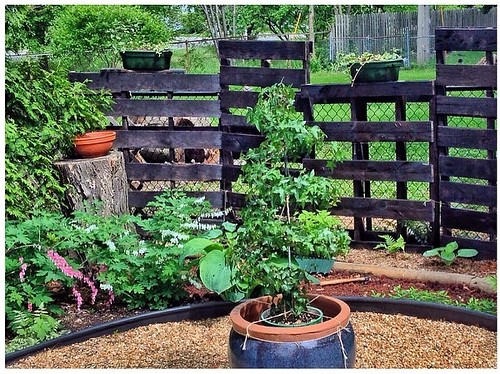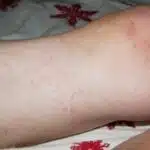Wooden furniture or flooring is a timeless addition to any home or office. However, no matter how careful one is, accidents happen and stains are inevitable. Stains can be a nightmare for anyone who loves their wooden surfaces. It could be due to water damage, coffee spills, ink marks, or even pet urine. Fortunately, there are ways to remove stains from wood without damaging the surface.
As a wood care expert, I have seen countless cases of irreparable damage caused by improper stain removal techniques. Therefore, it is important to approach the matter with caution and knowledge. In this article, we will discuss effective methods for removing stains from different types of wood surfaces while maintaining their natural beauty and texture. Whether you are dealing with an old stain or a fresh one, these methods will help you restore your wooden surfaces to their original state and prolong their lifespan.
Types Of Stains On Wood Surfaces
A wood surface that is stained can be an eyesore. Before we delve into the steps of removing stains from wood, it is essential to understand the causes of such stains. Different types of stains are caused by various sources, including water, oil, and rust. Water can cause watermarks or rings on a wooden surface when left for an extended period. Oil stains occur due to spills and can penetrate deep into the wood grain if not cleaned immediately. Rust stains result from metal objects placed on a wooden surface.
Prevention is always better than cure; hence, it is crucial to take measures to avoid staining your wooden surfaces. One way is by using coasters or tablecloths to protect your tabletops from water damage or spills. For outdoor furniture, consider covering them during harsh weather conditions like rain or snow to prevent water damage. Avoid placing metal objects directly on wooden surfaces as they can cause rust stains.
To remove any type of stain from a wooden surface, you must first prepare the area for treatment. This step involves cleaning the surface thoroughly with soap and water before applying any stain removal agent. The preparation process ensures that there are no dust particles or debris that may interfere with the effectiveness of the stain remover. After preparing the surface, apply the appropriate stain removal agent depending on the type of stain present on your wooden surface.
Preparing The Surface For Stain Removal
To effectively remove stains from wood, proper surface preparation is crucial. Sanding the affected area is the first step in preparing the surface for stain removal. Sanding techniques vary based on the type of stain and severity of damage.
For light stains and surface level damage, sanding with a fine-grit sandpaper may suffice. However, for deep stains or more severe damage, coarser grits may be necessary to remove enough material to eliminate the stain. It’s important to sand evenly and avoid over-sanding any one area, as this can result in an uneven finish once staining is complete.
After sanding, the surface should be cleaned thoroughly with a tack cloth or microfiber cloth to remove any dust or debris before applying any stain remover. Surface preparation is key to ensuring that the stain remover works effectively and produces a smooth finish. By following these steps and utilizing proper sanding techniques, removing stubborn stains from wood can be achieved successfully.
Moving forward into common mistakes to avoid when removing wood stains, it’s important to note that proper surface preparation is only one aspect of effective stain removal. Understanding how different types of stains interact with various wood types is also essential for achieving optimal results.
Common Mistakes To Avoid
After properly preparing the wood surface for stain removal, it’s important to avoid common mistakes that can ruin your efforts. Over sanding is a mistake that many people make when attempting to remove stains from wood. Sanding too much can remove more than just the stain, causing irreparable damage to the wood surface. It’s important to use a gentle touch and only sand enough to remove the stain.
Another mistake to avoid when removing stains from wood is using bleach. While bleach may seem like a quick fix for stains, it can actually do more harm than good. Bleach can discolor the wood and weaken its structure, making it more susceptible to damage in the future. Instead of using bleach, try using natural cleaners like vinegar or lemon juice.
Understanding the type of wood surface you’re working with is crucial when removing stains. Different types of woods require different cleaning methods and products. For example, softwoods like pine are more porous and absorbent than hardwoods like oak or cherry. This means that they may require gentler cleaning methods and should be sanded with care. By taking the time to understand your wood surface, you can ensure that your stain removal efforts are successful and don’t cause any additional damage.
Understanding The Type Of Wood Surface
Understanding the Type of Wood Surface is crucial in determining which Stain Removal Techniques to use. Different types of wood surfaces have different levels of porosity and grain patterns, which affect how stains penetrate and adhere to them. For example, softwoods like pine are more porous than hardwoods like oak or cherry. This means that stains can penetrate deeper into softwoods, making them harder to remove.
To properly treat a wood surface, it is important to identify its type and characteristics. This can be done by examining the color, texture, and grain pattern of the wood. A wood care expert can also use specialized equipment such as a moisture meter or magnifying glass to assess the wood’s condition. Once you have identified the type of wood surface you are dealing with, you can choose the appropriate Wood Surface Treatment and Stain Removal Techniques.
There are several factors to consider when selecting a Wood Surface Treatment and Stain Removal Techniques. These include the type of stain, the age of the stain, and the severity of the damage. Some effective techniques for removing stains from wood surfaces include sanding, bleaching, and using commercial stain removers. However, it is important to note that these techniques may not work on all types of stains or all types of wood surfaces. It is always best to seek advice from a professional if you are unsure about how to proceed with a specific stain removal project.
- Identify the type and characteristics of your wood surface
- Choose an appropriate Wood Surface Treatment based on your assessment
- Determine which technique(s) will be most effective for removing your specific stain
- Consider seeking advice from a professional for particularly challenging projects
Moving forward into Removing Water Stains from Wood…
Removing Water Stains From Wood
Water stains on wood can be an eyesore, but fear not, they can be removed with ease. These unsightly marks are a result of moisture penetrating the surface of the wood and leaving behind a stain. To remove water stains from wood, start by wiping down the affected area with a dry cloth to remove any excess moisture. Then, apply a small amount of regular toothpaste to the stain and gently rub it in using a soft-bristled brush. Let it sit for five to ten minutes before wiping it off with another clean, dry cloth.
Preventing future stains is just as important as removing current ones. To prevent water stains from forming on your wood furniture or floors, use coasters under drinks and avoid placing wet items directly on the surface. Additionally, consider using protective mats or runners in high-traffic areas to prevent scratches and scuffs that can lead to water damage.
But what about wine stains? While wine can be notoriously difficult to remove from fabric, it’s surprisingly easy to remove from wood. Start by blotting up as much of the wine as possible with a clean cloth. Then, mix equal parts vinegar and olive oil and apply it directly to the stain using a soft-bristled brush. Allow the mixture to sit for 30 minutes before wiping it away with a clean cloth.
Moving on from water and wine stains, next we’ll discuss how to remove ink stains from wood surfaces without damaging the finish.
Removing Ink Stains From Wood
After addressing how to remove water stains from wood, it’s important to discuss the prevention and removal of ink stains. Ink stains can be a bit more challenging to deal with than water stains if not addressed promptly. Prevention is key when it comes to ink stains on wood surfaces. It is advisable to use placemats or coasters to avoid any accidental spills.
If an ink stain does occur, prompt action is necessary for the best chance at removing the stain completely. The first step is to blot up as much of the ink as possible with a dry cloth or paper towel. Avoid rubbing the stain as this will only spread it further. Once most of the excess ink has been removed, use a cotton swab dipped in rubbing alcohol or vinegar to gently dab at the remaining stain.
For stubborn ink stains that won’t budge with rubbing alcohol or vinegar, there are other techniques that can be used. Here are three sub-lists of techniques:
- Use a mixture of baking soda and water and apply it directly onto the stain.
- Make a paste using equal parts cream of tartar and lemon juice, then apply it onto the stain.
- Apply hair spray directly onto the ink stain and let it sit for several minutes before wiping away with a damp cloth.
By following these prevention techniques and removal techniques, you can effectively address any potential ink stains on your wooden surfaces. However, if you’re dealing with pet urine stains on wood, there are some additional steps you’ll need to take to properly remove them.
Removing Pet Urine Stains From Wood
As pet owners, it’s essential to know how to remove pet urine stains from wood. The first step is to identify the affected area, which may be discolored and have a strong odor. To remove the stain, mix equal parts of white vinegar and water and apply it to the affected area using a cloth. Allow the solution to sit for 10-15 minutes before wiping it off with a clean cloth.
To ensure that the stain doesn’t reoccur, it’s crucial to address the root cause of the problem. One way of preventing reoccurrence is by training your pets not to urinate on wood surfaces or providing them with designated areas where they can relieve themselves. Additionally, sealing wood surfaces with a protective coat can make it easier to clean up any accidents and prevent them from penetrating deep into the wood fibers.
Odor elimination is another important aspect when dealing with pet urine stains on wood. After cleaning the stained area, sprinkle baking soda over it and allow it to sit overnight. Baking soda will absorb any lingering odors and leave the wood smelling fresh. The next day, vacuum or sweep away any remaining powder.
Transitioning into removing coffee stains from wood, if left unattended, coffee stains can penetrate deep into the wood fibers and become difficult to remove. In the next section, we’ll discuss effective ways of removing coffee stains from different types of wood surfaces without causing damage or discoloration.
Removing Coffee Stains From Wood
Coffee stains are one of the most common types of stains that can occur on wooden surfaces. To prevent coffee stains from forming, it is recommended to wipe up any spills immediately with a dry cloth or paper towel. However, if a stain has already formed, there are several DIY techniques that can be used for removing coffee stains from wood.
One effective technique for removing coffee stains from wood involves using a mixture of vinegar and water. Simply mix equal parts white vinegar and water in a spray bottle and apply it to the affected area. Let the solution sit for a few minutes before wiping it away with a clean cloth. Repeat this process until the stain is completely gone.
Another DIY option for removing coffee stains from wood involves using baking soda and water. Create a paste by mixing baking soda and water until it forms a thick consistency. Apply this paste to the stained area and let it sit for several hours before wiping it away with a damp cloth. This method may require multiple applications depending on the severity of the stain.
When trying to remove coffee stains from wood, it is important to avoid using harsh chemicals or abrasive materials that could damage the surface of the wood. By following these simple DIY techniques, you can effectively remove coffee stains without causing any additional damage to your wooden surfaces.
Transition: Now that we have covered how to remove coffee stains, let’s explore another common type of stain that can occur on wooden surfaces – oil stains.
Removing Oil Stains From Wood
Oil stains on wood can be a real eyesore, and they can happen so easily. Even if you take great care to prevent them, accidents can still occur. However, there are ways to remove oil stains from wood quickly and easily. By following these tips, you can get your wood looking like new again.
Preventing oil stains is the first step in keeping your wood looking great. If you’re working with oils or other liquids that could stain the wood, be sure to cover the surface with a drop cloth or plastic sheeting. This will help prevent spills from soaking into the wood. Additionally, if you do spill something on your wood, clean it up as quickly as possible to prevent it from setting into the surface.
If you do end up with an oil stain on your wood, don’t worry! There are plenty of DIY oil stain removers that you can use to get rid of the stain quickly and easily. One option is to mix baking soda and water into a paste and apply it directly to the stain. Let it sit for a few minutes before wiping it away with a damp cloth. Another option is to use dish soap and warm water to scrub away the stain gently. Both methods are effective at removing oil stains without damaging the wood surface.
Using natural remedies for stain removal is also an excellent option for those who prefer eco-friendly solutions. In the next section, we’ll explore some natural remedies that you can use to remove stubborn stains from your wood surfaces. These remedies are safe for both you and your furniture while being just as effective as traditional cleaning methods. So let’s dive in!
Using Natural Remedies For Stain Removal
Natural Remedies for Stain Removal
When it comes to removing stains from wood, natural remedies can be a viable alternative to chemical-based stain removers. Many people opt for natural remedies because they are safe and environmentally friendly. Moreover, natural remedies are easy to make and use at home.
One of the most popular natural remedies for removing stains from wood is vinegar. Vinegar is acidic and can break down stubborn stains and grime on wood surfaces. To use vinegar as a stain remover, mix equal parts of white vinegar and water in a spray bottle. Spray the solution onto the stained area, let it sit for a few minutes, then wipe it off with a clean cloth. For tougher stains, you may need to repeat the process several times.
While DIY stain removal techniques can be effective, there are times when professional help is necessary. If you have a valuable piece of furniture or an antique that needs restoration, it’s best to consult with a professional wood care expert before attempting any DIY stain removal techniques. A professional will have the knowledge and expertise to determine the best course of action based on the type of wood and the severity of the stain.
Chemical-Based Stain Removers
- Chemical-based stain removers are a common tool used in the wood care industry, and come in many different forms such as gels, pastes, and liquids.
- Chemical-based stain removers can be used to remove a variety of stains from wood, including paint, varnish, ink, and other organic matter.
- Chemical-based stain removers can be used on a variety of wood surfaces, including furniture, floors, and cabinets.
- The primary benefit of using chemical-based stain removers is that they are often more effective than other methods, such as sanding or using abrasive cleaners.
- Chemical-based stain removers can also be used to remove stubborn stains from wood that are difficult to remove with traditional methods.
- Additionally, chemical-based stain removers are typically less labor-intensive and more cost-effective than other methods of stain removal.
Types Of Chemical-Based Stain Removers
When it comes to removing stains from wood, chemical-based stain removers are a popular choice among homeowners and professionals alike. There are various types of chemical-based stain removers available in the market, each with its own unique composition and purpose. In this article, we will discuss the different types of chemical-based stain removers and their effectiveness comparison and safety considerations.
The first type of chemical-based stain remover is oxalic acid. This type of remover is effective in removing stains caused by water damage, rust, and mildew. It works by breaking down the organic compounds that make up these stains. However, it is important to note that oxalic acid can be harmful if ingested or inhaled and should be used with caution. It is recommended to wear protective clothing and gloves when using this product.
Another commonly used chemical-based stain remover is hydrogen peroxide. This type of remover works well on stains caused by blood, wine, and other organic materials. Hydrogen peroxide can also be effective in lightening dark patches on wood surfaces. However, it is important to use a lower concentration of hydrogen peroxide on wood surfaces as high concentrations can cause damage to the wood fibers. Safety considerations include wearing gloves and eye protection when using this product.
In conclusion, there are various types of chemical-based stain removers available for removing stains from wood surfaces. Each type has its own unique composition and purpose with different effectiveness comparison results and safety considerations to take into account when choosing the right one for your needs. It’s important to read labels carefully before use and follow instructions closely to ensure optimal results while minimizing any potential risks or hazards associated with these products.
Uses Of Chemical-Based Stain Removers
Chemical-based stain removers are commonly used by homeowners and professionals to remove stubborn stains from wood surfaces. The use of these products has become popular due to their effectiveness and convenience compared to traditional methods. However, it is important to note that not all chemical-based stain removers are created equal. Each type has its own benefits and drawbacks, as well as safety precautions to consider.
One of the main benefits of using chemical-based stain removers is their ability to remove tough stains quickly and effectively. This can save a significant amount of time and effort compared to using traditional methods such as sanding or bleaching. Additionally, some types of chemical-based stain removers can also lighten dark patches on wood surfaces, improving the overall appearance of the wood. However, it is important to follow safety precautions when using these products, as they can be harmful if ingested or inhaled.
Another benefit of using chemical-based stain removers is their versatility in removing different types of stains. There are various types available on the market that target specific types of stains such as water damage, rust, mildew, blood, wine, and other organic materials. However, it’s essential to read labels carefully before use and follow instructions closely to ensure optimal results while minimizing any potential risks or hazards associated with these products.
Overall, chemical-based stain removers offer a convenient solution for removing stubborn stains from wood surfaces. While there are benefits associated with their use, it’s important to weigh them against the potential risks and take appropriate safety precautions when handling these products. By doing so, you can achieve optimal results while ensuring the safety of yourself and those around you.
Benefits Of Chemical-Based Stain Removers
Chemical-based stain removers have become a popular option for homeowners and professionals to remove stubborn stains from wood surfaces due to their effectiveness and convenience. One of the main benefits of using chemical-based stain removers is their ability to remove tough stains quickly and effectively, saving time and effort compared to traditional methods such as sanding or bleaching. Additionally, some types can lighten dark patches on wood surfaces, improving the overall appearance of the wood.
Another benefit of using chemical-based stain removers is their versatility in removing different types of stains. There are various types available on the market that target specific types of stains such as water damage, rust, mildew, blood, wine, and other organic materials. However, it’s essential to read labels carefully before use and follow instructions closely to ensure optimal results while minimizing any potential risks or hazards associated with these products.
While chemical-based stain removers offer several benefits for removing stubborn stains from wood surfaces, it’s crucial to weigh them against the environmental impact they may have. Some chemicals used in these products can be harmful to the environment if not disposed of correctly or if they leach into soil or water sources. Therefore, it’s recommended to choose eco-friendly options when possible or dispose of these products properly according to local regulations. By doing so, you can achieve optimal results while also being mindful of reducing your impact on the environment.
Sanding And Refinishing Techniques
Chemical-based stain removers can be effective in removing stubborn stains from wood. However, this method is not always the best option. In some cases, using a sanding and refinishing technique may be necessary to completely remove the stain.
Refinishing techniques involve sanding down the surface of the wood to remove any existing finish or stain. This process requires careful attention to detail and skill to ensure that the wood is not damaged during the sanding process. Once the surface has been sanded down, it is important to apply a new finish or stain to protect and enhance the natural beauty of the wood.
The sanding process is crucial when refinishing wood. It is important to use proper sandpaper grits and techniques to avoid damaging the surface of the wood. Starting with a rougher grit and gradually moving towards a finer grit will help achieve a smooth surface for applying new finishes or stains. Sanding can be time-consuming, but taking care during this step will result in a beautifully refinished piece of wood that will last for years to come.
When it comes time to apply stain and sealant after removing a stain from wood, there are several factors to consider. The type of wood being refinished, as well as its age and condition, will all play a role in determining which products are best suited for use. Additionally, it is important to follow manufacturer guidelines carefully when applying these products in order to achieve optimal results. By taking these steps and using proper care throughout the refinishing process, you can successfully restore your wooden furniture or flooring back to its original beauty.
Applying Stain And Sealant After Removal
After successfully removing the stain from your wood surface, it is important to apply a sealant to protect the wood from future damage. Sealant application is a crucial step in maintaining the beauty and longevity of your wooden furniture, floors or other surfaces. There are different types of sealants available in the market, including water-based and oil-based options. It is important to choose the right one for your specific needs.
Once you have chosen the right sealant, it is time to select a stain color that will complement your interior design scheme. Stain color selection can be overwhelming because there are so many options available. However, it can also be fun as you get to experiment with different shades and hues until you find the perfect one for your space. Consider factors such as lighting, natural elements (like plants), and existing furniture pieces when making your selection.
After selecting a stain color that works for you, it is time to apply the stain and sealant. Follow the manufacturer’s instructions carefully and use a quality brush or roller for even application. Allow sufficient drying time between coats and ensure that each coat has been applied evenly before proceeding to the next one.
To prevent future stains on wood surfaces, there are several steps you can take such as using coasters under glasses and placing mats under hot dishes or pans. Additionally, avoid dragging heavy objects across wooden floors or furniture as this can cause scratches and damage over time. Regular cleaning with a gentle soap solution will also help keep your wooden surfaces looking their best for years to come.
Preventing Future Stains On Wood Surfaces
Proper wood care involves not only removing stains but also preventing them from happening in the first place. After successfully removing a stain, it is important to take measures that can help prevent future ones. One way to do this is by avoiding scratches on the surface of the wood. Scratches can easily lead to stains as they provide an area for dirt and grime to accumulate. To prevent scratches, it is advisable to use furniture pads or coasters when placing objects on wooden surfaces.
Another way to prevent stains on wood surfaces is by choosing the right cleaning products. Some cleaning products contain harsh chemicals that can damage the wood’s finish and make it more susceptible to staining. It is important to use gentle cleaning solutions that are specifically formulated for wood surfaces. When using such products, ensure that you follow the manufacturer’s instructions carefully.
In addition, regular maintenance can also help prevent future stains on wood surfaces. This involves dusting and wiping down wooden surfaces regularly with a soft cloth or duster. If spills occur, they should be wiped up immediately with a clean cloth and mild soap solution if necessary. By taking these preventive measures, you can keep your wooden surfaces looking beautiful and free from unsightly stains.
Caring for your wood surfaces after stain removal requires proper maintenance and attention to detail. In the next section, we will discuss some simple steps that you can take to care for your wooden surfaces effectively. By following these steps, you can ensure that your wooden surfaces remain in top condition for many years to come without succumbing to unsightly stains or damage caused by neglect or improper treatment.
Caring For Your Wood Surfaces After Stain Removal
To ensure that your wood surfaces remain stain-free, it is important to take preventive measures. However, if a stain does occur, removing it can be a daunting task. Once you have successfully removed the stain from your wood surface, there are several aftercare tips you should follow to maintain its appearance and integrity.
Firstly, ensure that the area where the stain was removed is completely dry before applying any protective coatings or treatments. This will prevent any moisture from becoming trapped in the wood and causing damage in the future. Additionally, avoid placing any heavy objects on the surface for at least 24 hours after cleaning to allow enough time for it to fully dry.
Secondly, regularly dust your wood surfaces with a soft cloth or feather duster. This will help prevent scratches and other damage that can lead to future stains. You can also use a slightly damp cloth to clean the surface when necessary but be sure not to use too much water as this could cause warping or buckling of the wood.
Lastly, consider applying a protective coating such as wax or sealant to your wood surfaces after cleaning them. This will help prevent future stains and keep your surfaces looking their best for longer periods of time.
Aftercare tips:
- Use coasters or placemats under glasses and dishes
- Avoid dragging heavy objects across your wood surfaces
- Keep an eye out for any signs of damage or wear and address them promptly
- Regularly rotate furniture and rugs to prevent uneven wear on your floors
- Apply furniture pads to the bottom of chairs and other furniture to prevent scratches – Use a damp mop or cloth to clean your wood floors, avoiding excess water that can cause damage
Conclusion
Removing stains from wood surfaces can be a tricky task, but with the right techniques and tools, it can be done effectively. Understanding the type of stain and the type of wood surface is crucial in order to select the appropriate removal method. Preparing the surface for stain removal by cleaning and sanding is also important for achieving optimal results.
Common mistakes to avoid include using harsh chemicals or abrasive tools that may damage the wood surface. It is also important to apply a sealant after removing the stain in order to protect the newly finished surface from future damage.
Sanding and refinishing techniques are often necessary for removing stubborn stains, especially those caused by water damage. Applying a new coat of stain after removal can help restore the natural beauty of the wood surface.
In conclusion, as experts in wood care and restoration, we recommend taking proper precautions to prevent future stains on your wood surfaces. This includes using coasters for beverages, wiping up spills immediately, and applying a protective coating on high traffic areas. Remember that prevention is always better than cure – an ounce of prevention is worth a pound of cure! By following these tips, you can ensure that your wooden furniture and surfaces remain beautiful and functional for years to come.
Image Credits
- “How to hide my crazy neighbor’s eyesore backyard from my shade garden? Old wood shipping palettes, stained, with pots of fast growing colorful vines on top.” by Ronald Douglas Frazier (featured)





























